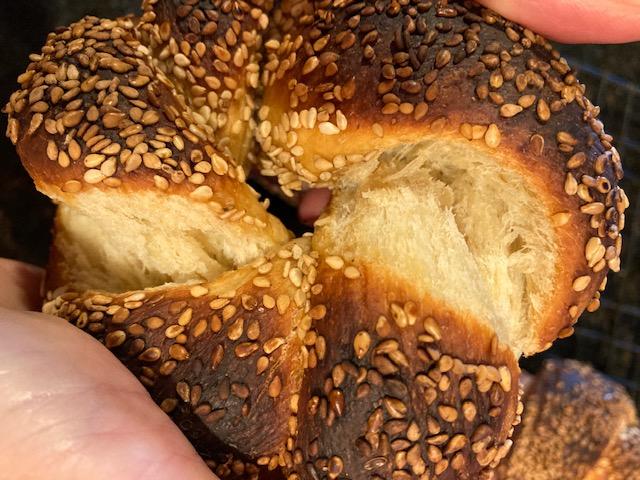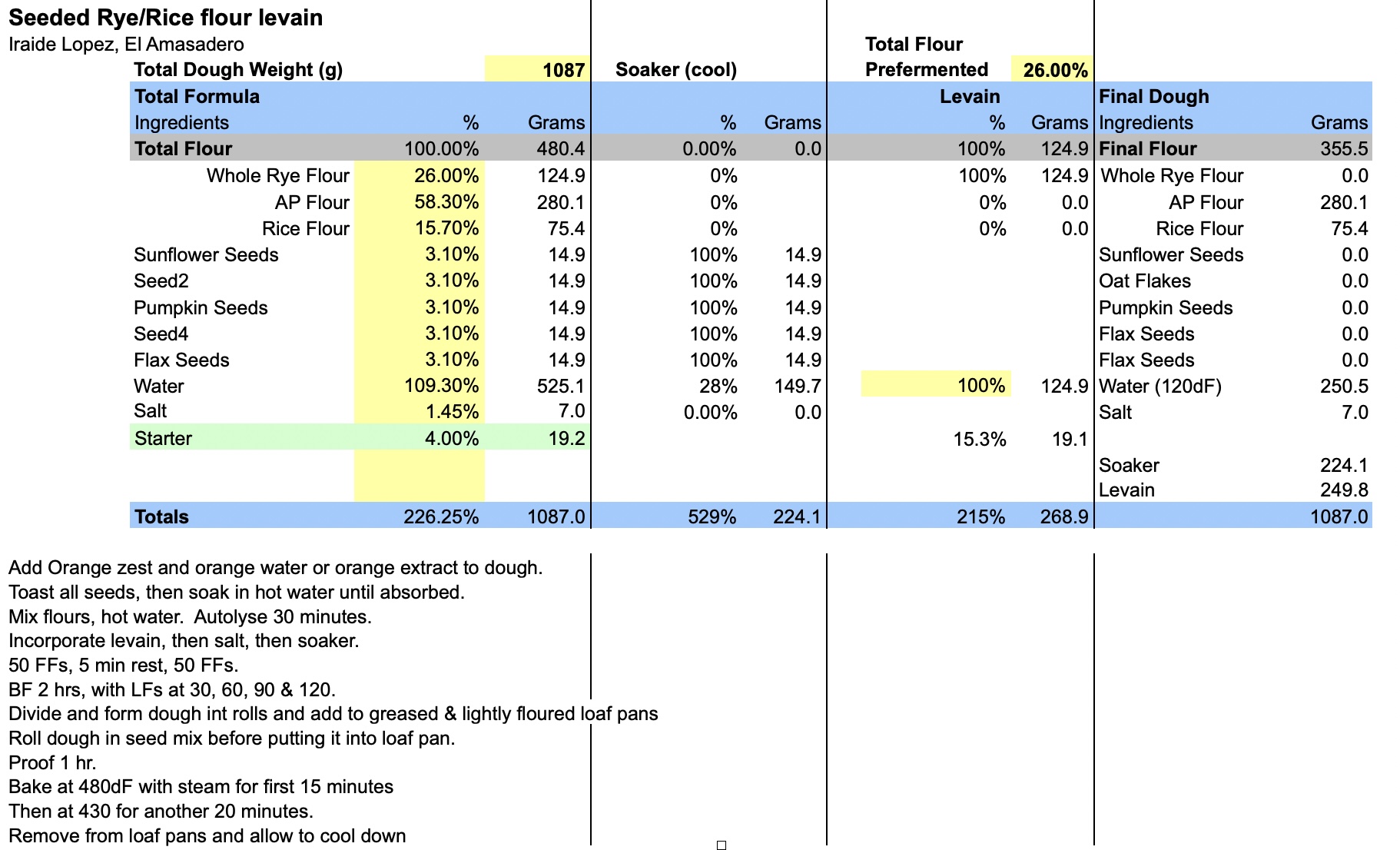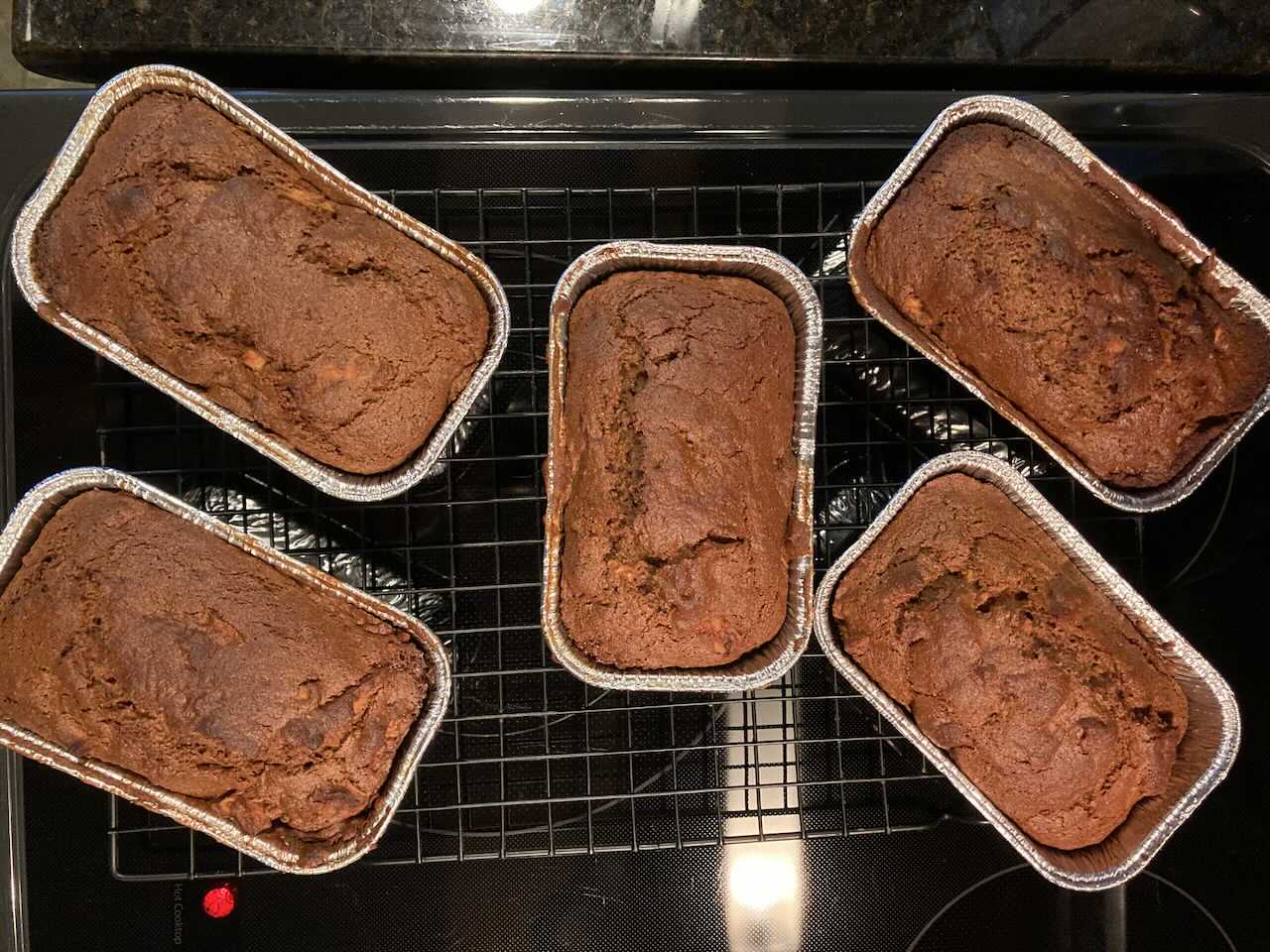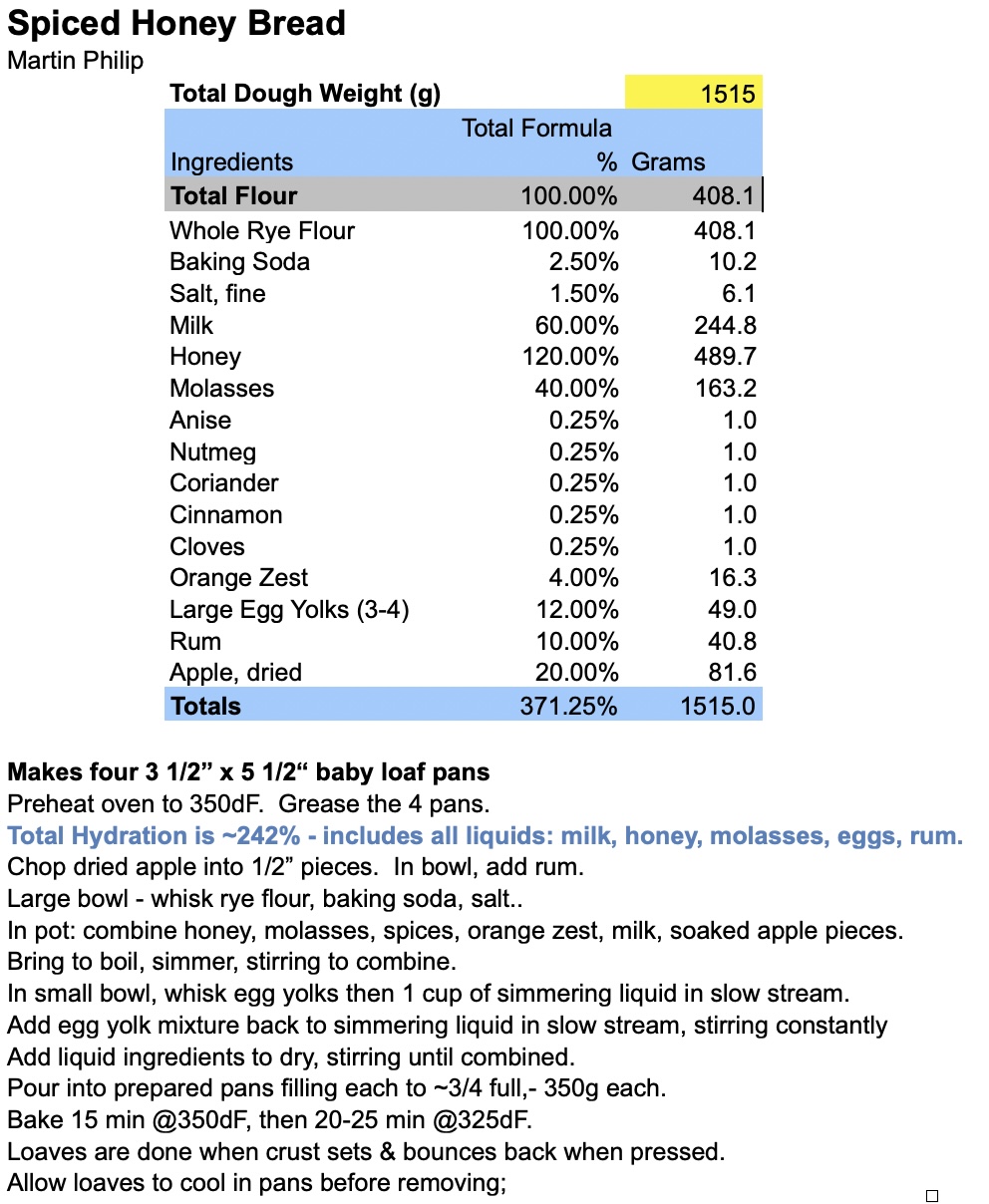The Community Bake posting can be found here
Perhaps to stimulate some thoughts about what you wish to try, here are five breads I’ve recently baked and which ventured into my own no comfort zone. Keep in mind that this is my personal version of this CB, and merely here to give examples of what took me out of my own personal comfort zone. If it provides some ideas for you, all the better.
For each of these I provide a "Why this is out of my Comfort Zone” to explain what makes this bake out of the ordinary for me. Please provide your own for whatever you decide to post.
All of the “rules” and general instructions can be found in the CB.
Turkish Simits.
Found on YouTube, this bagel-like bread is seemingly perfect for accompanying a cup of coffee or tea. My friend, who grew up in Athens wrote this to me about the simit.
In my part of the world it is called koulouri (bread ring). Years back when I was a kid there were salesmen of this walking the streets in Greece selling them. They typically stack hundreds of them on a wooden platform which they will carry on their shoulder. Amazingly skilled I had never seen or heard of one of them dropping the platform and spilling them. Back then each cost one drahma which was the equivalent of maybe 5 - 10 cents. You handed the drahma to the guy and picked one from the stack and went your way. Those times are gone now and only exist in memory. They are sold now in bakeries and pastry shops each of them now a few euros.
Why this is out of my Comfort Zone: I’ve yet to bake a bagel. This version of a simit “requires” a single strand to be doubled over and braided onto itself before sealing closed, and there is a molasses water dip for the ring before applying the sesame seeds.
These are “fun” and easy to make, and a nice companion to place on a dessert table. And with some practice I might even be able to get these to be rounder!




*********************************************************************************
Pain Au Levain with Polenta.
Kingdom Bakery, Tampa. As a lover of semolina and sesame seeds, this bread looked so appealing to me. I had some trouble adjusting the formula from the video to my BBGA spreadsheet and decided to adjust the hydration down a few percent to accommodate for the moisture provided by the polenta.
Why this is out of my Comfort Zone: My experience with porridge as an ingredient is quite limited, perhaps only to include some oatmeal once or twice a few years ago. I love polenta, be it creamy or in cake form, and so I thought I’d give this keeper of a bread a go. And I’m so glad I did. A search for ensuring a creamy polenta as the ingredient provided me with a simple and surefire way to cook a creamy polenta in 5 minutes rather 30. Place a 3:1 ratio of water:coarse grain corn meal in a pot and allow it to soak for ~ 1 hour. Bring to a boil and then back down to lively simmer, gently stirring once the pot starts to boil. In 5 minutes the polenta will reach a creamy texture.



*********************************************************************************
Potato/Semolina Levain.
Niko Romito, Reale Ristorante, Italy. Posted by another TFLer, it is another in my arsenal of semolina breads. This is a very wet dough thanks to the addition of boiled potatoes and all the moisture they bring in. Due to the high overall moisture, I lowered the water hydration from 72% to 64%, and it is still a difficult bread to wrangle. The video has this bake at 400dF, but I ignored that and bumped the oven temp to 460dF. And think that I made the right decision.
Why this is out of my Comfort Zone: As above, my experience with potato as an ingredient is also quite limited. Potato seems to create a soft bread. And this bread went halfway! The crumb was amazingly soft and due to my pushing the oven temp, the outside gave me the dark and crispy snap that I much prefer to the more typical soft crust of a potato bread. I can see coming back to this again.



*********************************************************************************
Seeded Rye/Rice Flour Levain.
Iraide Lopez from the El Amasadero website, the official name for this loaf pan bread is
Pan multicereales con azahar (Multi Grain Bread with Orange Blossom Water). Why this is out of my Comfort Zone: My first usage of rice flour, and along with the five grains there is the addition of “Orange Blossom Water” which is foreign to me but I added a few drops of orange extract and orange zest to the dough. And topped it off with a roll in bran flakes. Including the soaker the water tops out at ~109%.
Another pan loaf that I might not visit again, and my wife was not enjoying the orange notes that the extract and zest provided. The Hamelman 5-grain is a superior choice to my liking.



*********************************************************************************
Spiced Honey Bread. Martin Philip, from his book
Breaking Bread: A Baker's Journey Home in 75 Recipes. I own just about no bread baking books, able to count them on the fingers of one hand. But I like him and this book was temporarily discounted to under US $10, and so I bought myself a Christmas present.
Why this is out of my Comfort Zone: The leavening agent in this bread is baking soda, which I’ve never used before for my breads. There is no water, but rather a combination of milk, honey and molasses to provide most of the 242% hydration. This bread uses 5 spices and orange zest, and has no Bulk Ferment. Mix, pour, bake! The bread is designed for baby loaf pans 3.5" x 5.5”.
Enough to pique my interest, and certainly a tasty "dessert" loaf, it is a more complicated pan loaf mix than the flavor warrants. Not sure if I’ll travel this route again, but it was a fun adventure at least this one time. Certainly more of a quick bread rather than an "artisan" bread.




*********************************************************************************
The Community Bake posting can be found here